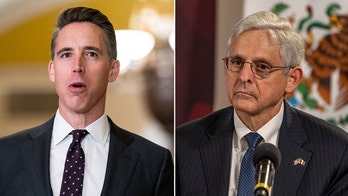The First 100 Days: Child care and elder care
How President-elect Trump plans to address the issues; Alicia Acuna goes in-depth for 'Special Report'
RENO, Nev. – Sarah O'Grady and Dulce Ruiz are strangers with a lot in common.
Both say they have lost jobs for missing days at work or being late while they juggled responsibilities as single parents. Both struggled to find child care in Nevada, which is one of the least affordable states in the nation for it.
"It's coming down to being able to afford what [my children] need,” O'Grady said.
President-elect Donald Trump has indicated he wants to help parents like them as part of his first 100 days. While the incoming president is best known for his tough talk on trade and terror and illegal immigration, he has vowed to reduce child-care costs for millions, with a proposal called the Affordable Childcare and Eldercare Act.
As with other legislative proposals, Trump could benefit from a Congress that remains Republican-controlled. But the need for relief looms large for O'Grady and those like her. She candidly refers to herself as "working poor" even though she works full-time plus overtime shifts. "Child care wise, there's probably enough child care out there ... but not affordable child care," she said.
Marty Elquist at The Children's Cabinet, a nonprofit that works to connect parents with services, says it can take up a big chunk of the budget: "A mom who makes the median income in the state of Nevada with an infant and a pre-schooler would have to spend 54 percent of her income just to pay for child care."
O'Grady, who is on a waiting list to help cover formal daycare, says she has considered a second job. Ruiz gets some help with child care from her mother, but it's limited because her mother needs to work her own job. "It's stressful ... for the job, for them," she said.
At University of Nevada Reno Early Head Start, which serves families falling below federal poverty guidelines, staff said it is expensive to run because group sizes have to be small. The center, which faces closure due to a building sale, can only serve 3 to 5 percent of existing need.
A fact sheet produced by his campaign indicates Trump wants to reduce regulations and open up more family and community-based care options. This could make a difference in states like Nevada, which has child care “deserts” where no licensed care options exist – and people rely on family, friends and neighbors.
The core of the Trump plan aims to provide relief to families via the tax code. Under the proposal, individuals making less than $250,000 (or $500,000 for joint filers) would be able to deduct child care expenses, up to their state's average cost of care.
The same deduction, though, would apply for stay-at-home parents -- which raises questions. "There's no incentive to either go to work or not. Either way, you're getting some kind of deduction from this plan,” said Alan Cole, an economist at the non-partisan Tax Foundation.
The Trump plan also would offer Dependent Care Savings Accounts that roll over year to year. People could start setting aside money before they even have children. And, the plan would guarantee six weeks paid maternity leave.
Cole estimates the proposal could run at least $500 billion to $1 trillion over 10 years, depending on what is included. "You've got to wonder what the pay-fors are,” Cole said. “Whether some other program that people also benefit from might be cut, or that kind of thing. There's no free lunch."
Trump, meanwhile, also wants to address the cost of care for the elderly. In Colorado, for example, the population of those above age 65 years old is projected to increase 68 percent by the 2030, according to a report prepared by the Keystone Policy Center. As with child care, Trump wants to establish pre-tax deductions to help offset the cost of elder care as well as the Dependent Care Savings Accounts.
Karen Brown, now CEO of Seniors Matter, points to her own story as an example of the financial challenges. She quit her day job in the oil-and-gas industry to be a family caregiver; her mother had significant savings for retirement, but a stroke and subsequent care derailed her finances. "If my family situation is any clue, the challenges we had were around two issues: money and caregivers," Brown said.
She has served on Colorado's Strategic Action Planning Group on Aging which has recommended legislation to allow care givers to receive compensation for four to 12 weeks of caring for an elderly person, so there can be flexibility at work.
Those in the elder-care sector point out labor is one of the biggest costs and challenges. "It's really critical that not only do you get somebody that can do the work, but that actually wants to do the work and wants to be a caregiver," said Doug Farmer, CEO of the Colorado Health Care Association. “I think one of the things as Americans we don't tend to think about [is] what we'll do when we're not able to care for ourselves."





